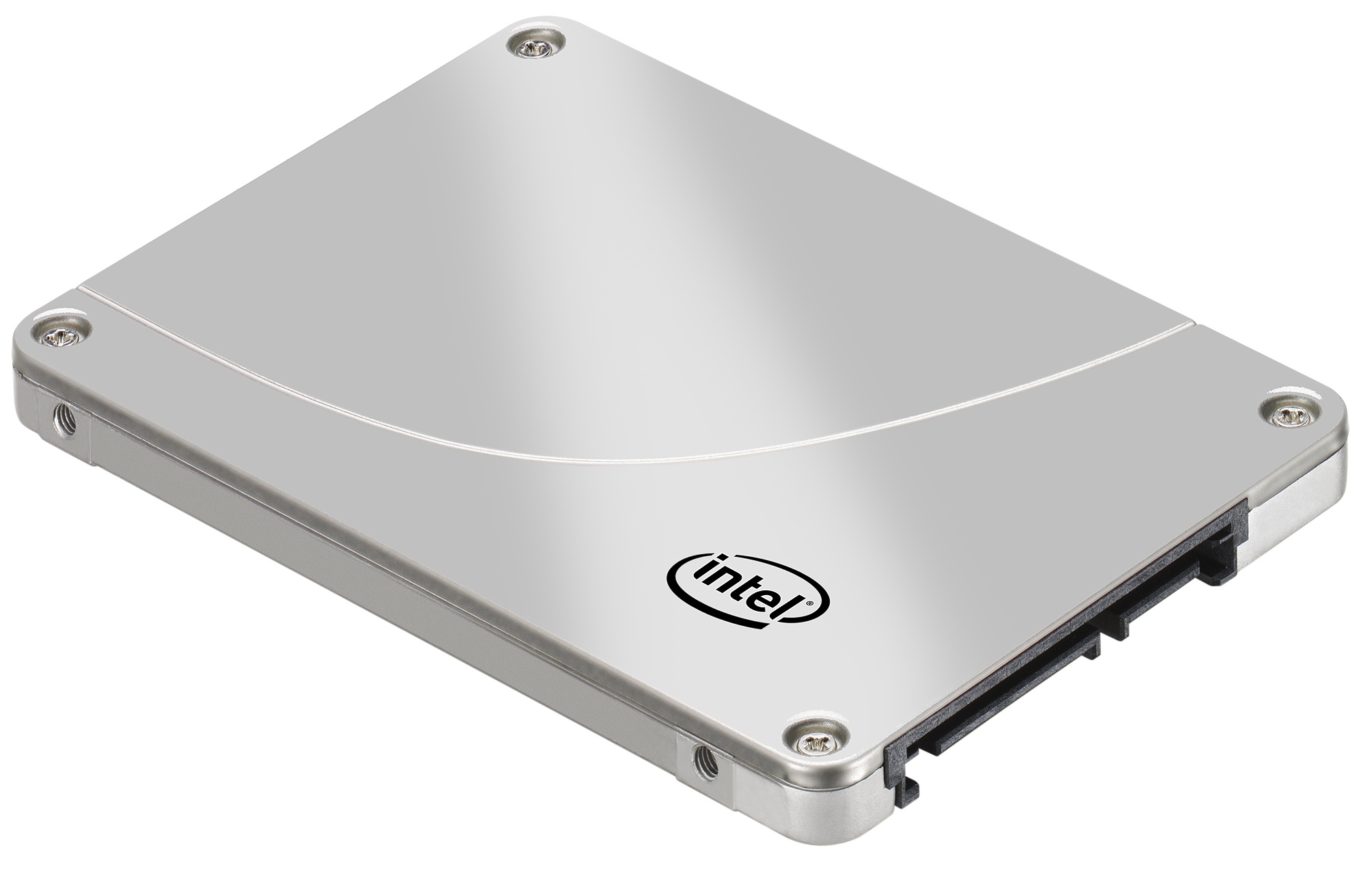Intel Announces New 320 SSD Series
Intel's new line of SSDs is based on 25-nm NAND flash memory and offers up to 600 GB of storage.
Monday Intel officially launched a new line of 2.5-inch solid-state drives (SSDs) called the 320 Series. The new line replaces and builds upon Intel's current high-performing X25-M SATA SSDs, offering better performance and reliability.
According to Intel, the 320 SSDs are based on 25-nm Intel NAND Flash Memory which should offer a 30-percent price reduction compared to second-generation drives. That also means consumers will see larger storage capacities of up to 600 GB thanks to the 25-nm processing and lower manufacturing costs.
"Intel designed new quality and reliability features into our SSDs to take advantage of the latest 25nm silicon, so we could deliver cost advantages to our customers," said Pete Hazen, director of marketing for the Intel Non-Volatile Memory (NVM) Solutions Group.
Targeting mainstream consumers, corporate IT or PC enthusiasts looking for a performance boost over HDDs, the 320 Series arrives with 40 GB, 80 GB, 120 GB, 160 GB, 300 GB and 600 GB versions. Surprisingly, all six will use the SATA 3.0 Gb/s interface (rather than the speedier SATA 6.0 Gb/s), but that also means the drives will be supported by "more than 1 billion" SATA 3.0 Gb/s PCs already sitting in homes and businesses worldwide.
On the technical front, Intel's 320 Series produces up to 39,500 input/output operations per second (IOPS) random reads and 23,000 IOPS random writes on its highest-capacity drives. They also provide up to 220 MB/s sequential writes and up to 270 MB/s sequential reads. Intel also threw in 128-bit Advanced Encryption Standard capabilities on every drive, to help protect personal data in the event of theft or loss.
"Already one of the most solid-performing SSDs over time, Intel continues to raise the bar on SSD reliability in the way it has architected its third generation, using proprietary firmware and controller, to further demonstrate that not all solid-state drives are created equal. In this rendition, Intel creatively uses spare area to deploy added redundancies that will help keep user data protected, even in the event of a power loss," the company said.
Although consumer pricing wasn't provided, tags for retailers purchasing the new SSDs in quantities of 1000 are $89 for the 40 GB version, $159 for 80 GB, $209 for 120 GB, $289 for 160 GB, $520 for 300 GB and $1,069 for 600 GB.
Get Tom's Hardware's best news and in-depth reviews, straight to your inbox.
Intel SSDs can be purchased in the United States from such retailers as Best Buy or Fry’s Electronics, plus a variety of resellers, retailers or Internet e-tailers such as Newegg.com or Amazon.com worldwide.

Kevin Parrish has over a decade of experience as a writer, editor, and product tester. His work focused on computer hardware, networking equipment, smartphones, tablets, gaming consoles, and other internet-connected devices. His work has appeared in Tom's Hardware, Tom's Guide, Maximum PC, Digital Trends, Android Authority, How-To Geek, Lifewire, and others.
-
scook9 Shame these weren't out last to beat the sandforce first gen stuffReply
Now everyone cares only about Sata 3 :(
If I had not just gotten a pair of G2 120GB drives I would have gotten these instead -
kcorp2003 waiting on the new Z68 chipset to see what kind features it offers for SDD/HDD setups. I can probably afford the 80GB model.Reply -
JamesSneed "more than 1 billion" SATA 3.0 Gb/s PCs already sitting in homes and businesses worldwide." Here I thought drives with SATA 6.0 Gb/s are backwards compitible SATA 3.0 Gb/s controllers.Reply -
jprahman I don't quite get why these drives don't support SATA III. I mean the listed reason is compatibility, but SATA III drives were compatible with SATA II controllers.Reply -
JohnnyLucky The bulk of the Intel advertising indicates the 320 is a "mid-level" ssd and the target audience consists of users with SATA II (3 Gb/s) systems. Looks to me like Intel knows where their "bread and butter" is. At 1 billion pc's there is an awful lot.Reply -
ap3x thrasher32$1069 for the 600GB version??? OUCHReply
Huh, that is a great price for 600gig SSD. Are you commenting that that is just allot of money in general or a high price for a SSD. I have never seen a decent performing SSD at 500+ gig for less than that? -
jprahman Reply9280566 said:The bulk of the Intel advertising indicates the 320 is a "mid-level" ssd and the target audience consists of users with SATA II (3 Gb/s) systems. Looks to me like Intel knows where their "bread and butter" is. At 1 billion pc's there is an awful lot.
I understand that, but since SATA III drives are backwards compatible with SATA II systems, then why not have the drive support SATA III for those that do have SATA III systems. I mean I can't think of a good reason other than a possible small increase in cost not to make the drive SATA III.
-
maxiim Dont forget those are wholesale prices for retailers, I'm sure that 1069 is gonna be a good 1200+ per if not more.Reply
